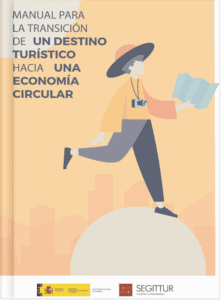Client
State-owned Company for the Management of Innovation and Tourism Technologies (SEGITTUR).
Spain is one of the five most visited countries in the world by tourists. In 2019, it received nearly 84 million visitors, and tourism contributed 124% to the national GDP and 129% to employment. However, within the context of a linear economic development model, Spain’s tourism model generates a set of negative externalities that contribute to environmental degradation: greenhouse gas emissions, waste generation, water consumption, and degradation of natural and social capital.
The challenge
To contribute to promoting circular transition in tourism, which plays a key role as a productive sector in Spain and, as such, can be a driving force for the circular transition that influences other sectors and favours territorial transformation.
What was done?
A thorough analysis of documentary sources and a dozen interviews with tourism and sustainability experts were conducted. A methodology was defined for destinations and tourism companies to either develop a detailed plan that meets their own sustainable tourism planning instruments or to define the first steps in this transition process. This methodology was applied in four tourist destinations belonging to the Smart Tourist Destinations Network: Gijón, Málaga, Mallorca, and Ribera de Navarra, which allowed for the evaluation of barriers and opportunities to promote circular tourism in these destinations and their business fabric. The project was carried out jointly with HIDRIA.
Results
Two manuals: Manual para la transición de un destino turístico hacia una economía circular (Manual for the Transition of a Tourist Destination to a Circular Economy) and Manual para la transición de una PYME turística hacia una economía circular (Manual for the Transition of a Tourist SME to a Circular Economy).
The first two parts of the manuals include an introduction to the concept of a circular economy and its connection with global and Spanish tourism activities. The third part delves into the development of a detailed plan towards circularity, based on four key questions: where are we now in terms of circular tourism? where do we want to go? how do we get there? And once the action plan is defined, what is our performance?
For each of these questions, the manuals not only provide a methodology to follow but also incorporate practical examples, working templates, and indicative lists of potential actions to take.
Conclusions
The Spanish tourism sector has at its disposal manuals designed to assist them on the path towards more circular tourism.
Click on the images to download the manuals:.


